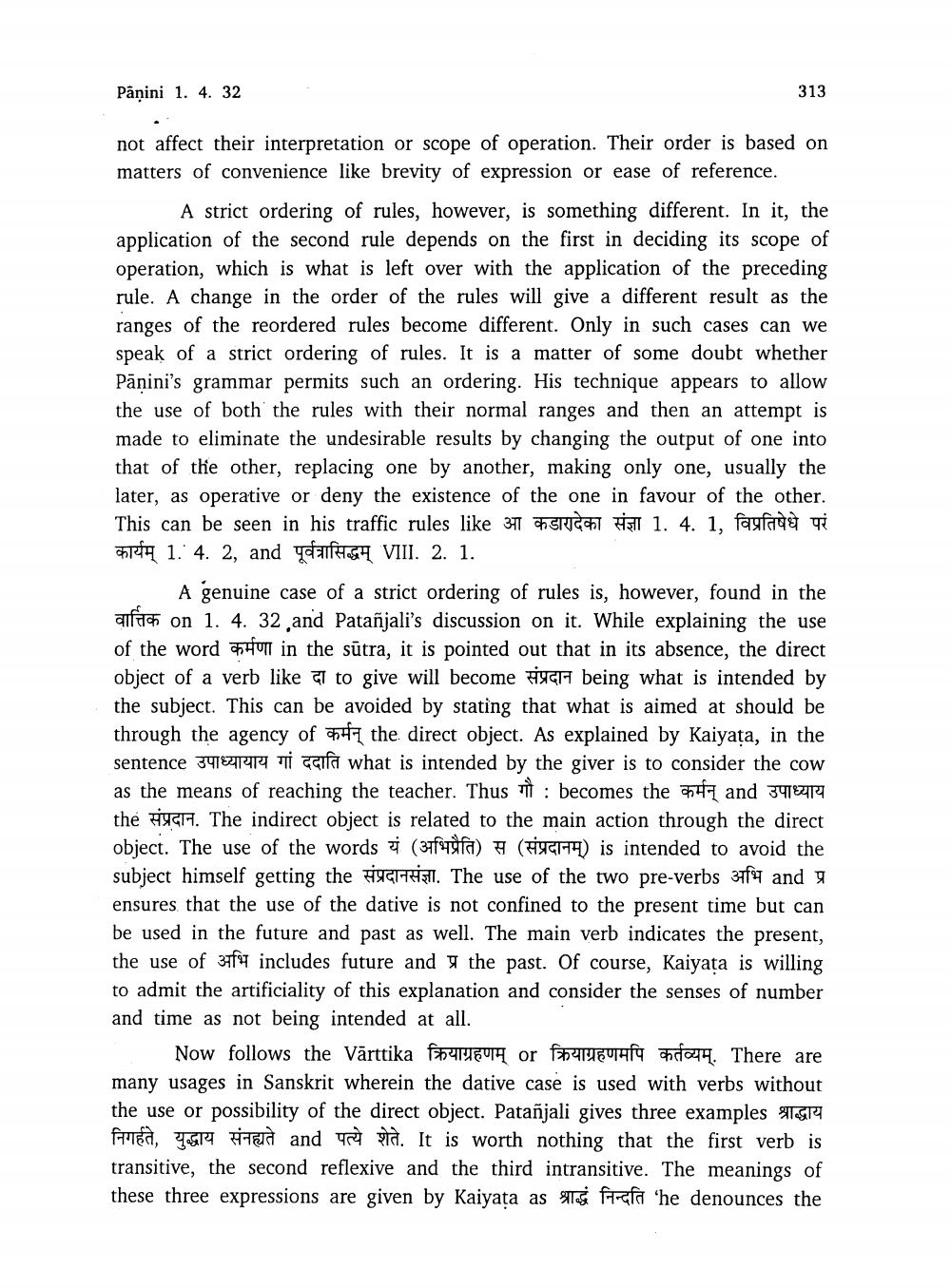________________
Panini 1. 4. 32
313
not affect their interpretation or scope of operation. Their order is based on matters of convenience like brevity of expression or ease of reference.
A strict ordering of rules, however, is something different. In it, the application of the second rule depends on the first in deciding its scope of operation, which is what is left over with the application of the preceding rule. A change in the order of the rules will give a different result as the ranges of the reordered rules become different. Only in such cases can we speak of a strict ordering of rules. It is a matter of some doubt whether Panini's grammar permits such an ordering. His technique appears to allow the use of both the rules with their normal ranges and then an attempt is made to eliminate the undesirable results by changing the output of one into that of the other, replacing one by another, making only one, usually the later, as operative or deny the existence of the one in favour of the other. This can be seen in his traffic rules like 311 CACRIGT I 1. 4. 1, fayfare i orth 1. 4. 2, and fHG4 VIII. 2. 1.
A genuine case of a strict ordering of rules is, however, found in the alfarah on 1. 4. 32,and Patañjali's discussion on it. While explaining the use of the word 4701 in the sūtra, it is pointed out that in its absence, the direct object of a verb like to give will become HUGH being what is intended by the subject. This can be avoided by stating that what is aimed at should be through the agency of the direct object. As explained by Kaiyata, in the sentence 3Y&RIP Ticgifa what is intended by the giver is to consider the cow as the means of reaching the teacher. Thus : becomes the 47 and 34214 the HUGH. The indirect object is related to the main action through the direct object. The use of the words (3f49fa) H (HYGHH) is intended to avoid the subject himself getting the HIGH-E1. The use of the two pre-verbs 3719 and ensures that the use of the dative is not confined to the present time but can be used in the future and past as well. The main verb indicates the present, the use of 3714 includes future and 7 the past. Of course, Kaiyata is willing to admit the artificiality of this explanation and consider the senses of number and time as not being intended at all.
Now follows the Varttika क्रियाग्रहणम् or क्रियाग्रहणमपि कर्तव्यम्. There are many usages in Sanskrit wherein the dative case is used with verbs without the use or possibility of the direct object. Patañjali gives three examples Pl निगर्हते. युद्धाय संनद्यते and पत्ये शेते. It is worth nothing that the first verb is transitive, the second reflexive and the third intransitive. The meanings of these three expressions are given by Kaiyata as stade frafa 'he denounces the




